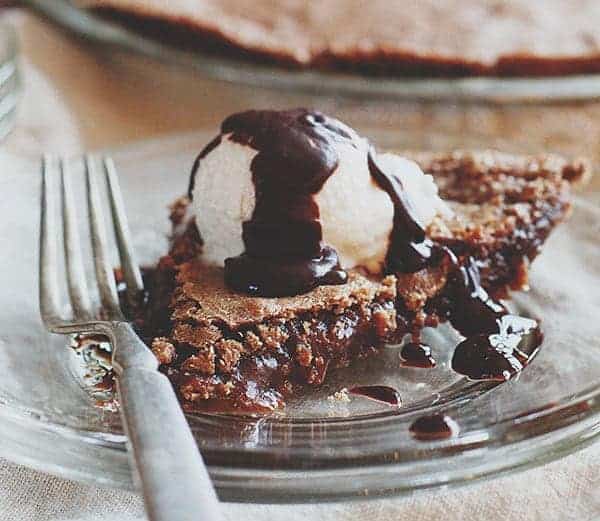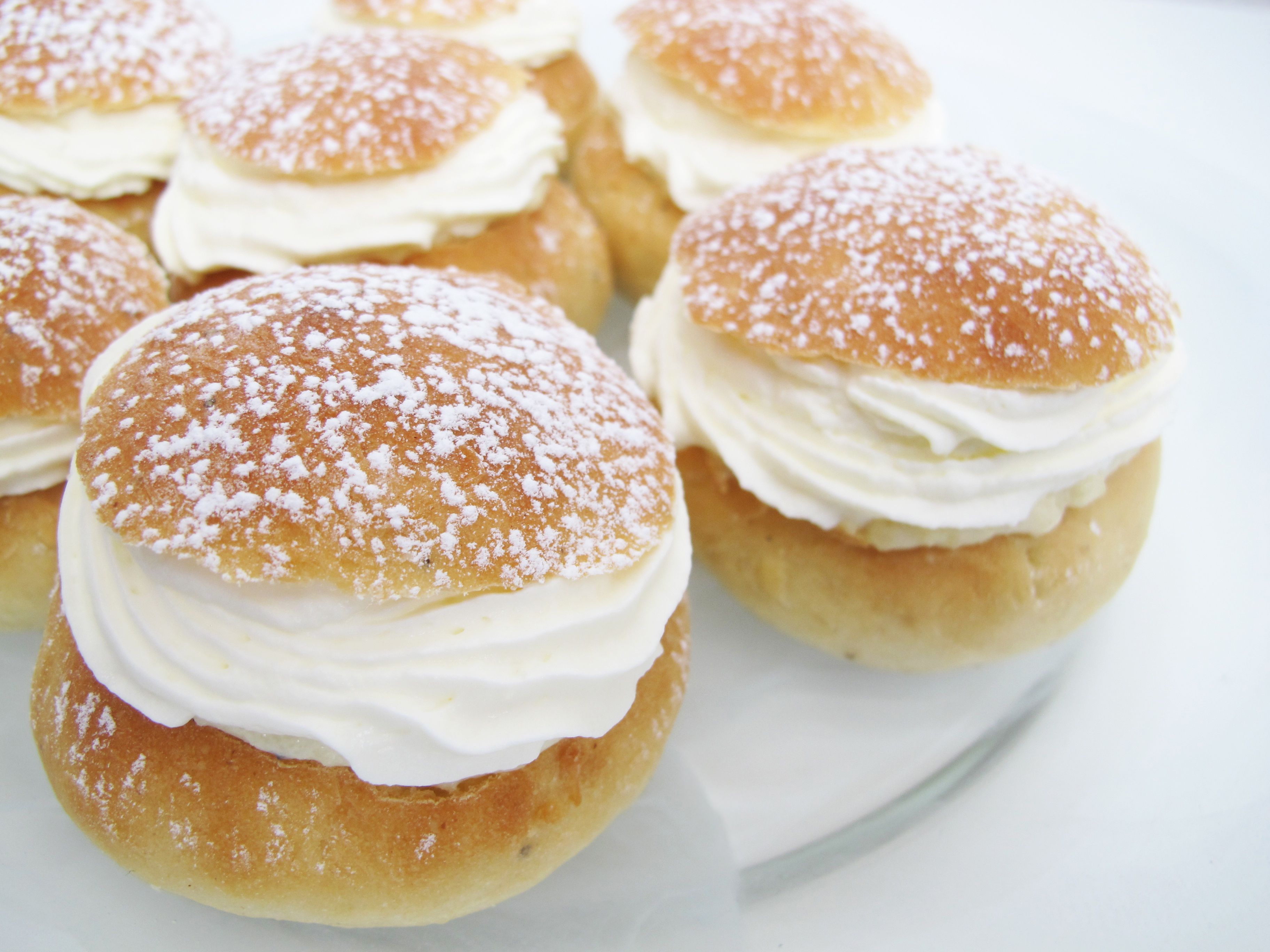“Swedish desserts, like the cinnamon bun, are more than just sweets—they’re a symbol of togetherness and tradition.’ They explained that these treats are deeply tied to Swedish culture, especially during fika, the beloved coffee break. It’s not just about the flavors; it’s about taking a moment to pause, connect with others, and enjoy the simple pleasures of life. In Sweden, dessert is more than food—it’s a way of living.”
One thing I love about Sweden country is its amazing pastries and desserts. My favorite is the cinnamon bun. It’s so popular here that you can find it in almost every café and home. It’s not just a sweet treat—it’s a big part of Swedish culture. In fact, we even have a special day to celebrate it called Kanelbullens dag, or Cinnamon Bun Day, on October 4th. It’s a fun tradition that shows how much we love this dessert.
I always enjoy having a cinnamon bun with a cup of coffee, especially during fika, which is our cozy coffee break time. The smell of freshly baked cinnamon buns is amazing, and the taste is even better. They’re soft, sweet, and have just the right amount of cinnamon.
If you’ve never tried a Swedish cinnamon bun, you’re missing out! It’s a simple dessert, but it means so much to us. It’s not just food—it’s a way to slow down, enjoy life, and share a moment with friends or family. That’s why it’s so special here in Sweden.
Swedish Desserts
Swedish desserts offer a delightful mix of flavors and traditions. They reflect the country’s rich cultural heritage and seasonal ingredients. From creamy cakes to spiced cookies, Swedish sweets are diverse and unique.
Cultural Significance
Desserts hold a special place in Swedish culture. They are enjoyed during festive occasions and daily coffee breaks, known as “fika”. This practice involves sharing sweet treats with friends and family. Desserts bring people together and create cherished moments.
Traditional Vs. Modern
Traditional Swedish desserts often feature ingredients like cinnamon, cardamom, and berries. Classic treats include “kanelbullar” (cinnamon buns) and “prinsesstårta” (princess cake). These sweets have been enjoyed for generations.
Modern Swedish desserts incorporate global influences and new techniques. Chefs experiment with flavors and presentation. They create innovative desserts while honoring traditional roots. This blend of old and new keeps Swedish sweets exciting and fresh.

Overview Of Popular Swedish Desserts
Sweden is famous for its rich culinary traditions. Swedish desserts are a key part of this culture. They combine simplicity with flavors that delight the senses. From classics to modern creations, Swedish desserts offer a tasty journey through the nation’s history and creativity.
Classic Choices
Classic Swedish desserts have stood the test of time. Semla, a cardamom bun filled with almond paste and whipped cream, is a beloved treat during Lent. Another favorite is kanelbulle, the cinnamon bun. It is enjoyed with coffee during fika, a cherished Swedish coffee break. Prinsesstårta, or Princess Cake, is a layered sponge cake with cream, jam, and green marzipan. It is often served at celebrations and special occasions.
Contemporary Favorites
Modern Swedish desserts bring new twists to traditional flavors. Kladdkaka, a gooey chocolate cake, is a popular choice. It is simple to make and deeply satisfying. Chokladbollar, or chocolate balls, are another hit. Made with oats, cocoa, sugar, and butter, they are rolled in coconut or pearl sugar. For a refreshing treat, try lingonberry parfait. This dessert blends tart lingonberries with sweet cream, creating a perfect balance.
The Reign Of Semla
Semla Often referred to as the dessert that “killed a king,” semla is a sweet roll filled with almond paste and whipped cream. The story goes that King Adolf Frederick of Sweden indulged in too many semlor, leading to his demise. This dessert is celebrated for its rich flavor and cultural significance, especially during Lent.
Sweden is known for its beautiful landscapes, rich culture, and delicious food. Among its many culinary delights, one dessert stands out above the rest: Semla. This beloved treat has captured the hearts of Swedes and dessert lovers worldwide. Let’s dive into the story of Semla and see why it reigns supreme in Sweden.
History And Origin
The Semla has a rich history dating back to medieval times. Originally, it was a simple bread bun eaten before Lent. Over time, it evolved into a more decadent treat. By the 18th century, Semla became a sweet bun filled with almond paste and whipped cream.
Today, Semla is enjoyed in various forms across Sweden. Traditional Semla is still the most popular, but you can find many modern variations. Despite its evolution, the essence of Semla remains the same. It is a symbol of Swedish culinary heritage and tradition.
Ingredients And Preparation
The key ingredients of Semla include cardamom-spiced wheat buns, almond paste, and whipped cream. The buns are soft and fragrant, providing a perfect base for the fillings. Almond paste adds a rich, nutty flavor, while whipped cream gives it a light, airy texture.
Preparing Semla is both an art and a tradition. Bakers first prepare the buns and let them cool. Then, they cut off the tops and scoop out a bit of the inside. They mix the scooped-out bread with almond paste and milk to create a smooth filling. Finally, they fill the buns with this mixture, add a generous dollop of whipped cream, and place the tops back on. A dusting of powdered sugar completes the dessert.
The result is a delightful treat that is both rich and light. Each bite offers a perfect balance of flavors and textures. It’s no wonder Semla holds a special place in Swedish hearts and kitchens.

How To Enjoy Semla
The semla is a beloved Swedish dessert that brings joy to many. This delightful pastry, a cardamom-spiced bun filled with almond paste and topped with whipped cream, is a must-try. Understanding how to enjoy it can make your experience even better.
Seasonal Availability
Semla is traditionally enjoyed during the season of Lent, especially on Shrove Tuesday. This day is also known as Fat Tuesday or Fettisdagen in Swedish. While you can find semla in some bakeries all year round, it is most popular and widely available in the weeks leading up to Easter.
Serving Suggestions
To get the full experience of a semla, it’s best served fresh. Here are some popular ways to enjoy it:
Traditional Method: Eat it as is, with a cup of coffee or tea.
Hetvägg: Warm the semla in a bowl of hot milk. This is a classic way to enjoy it on cold days.
Modern Twists: Some enjoy semla with added flavors like chocolate or fruit jams. Experiment and find your favorite.
Whether you stick to tradition or try something new, the semla promises a delightful experience.
Regional Variations Of Semla
Semla is a beloved dessert in Sweden. It is a traditional sweet roll filled with almond paste and whipped cream. Each region has its own unique twist on this classic treat. These variations make semla even more special.
Unique Twists
In the north, semla often includes a hint of cardamom. This adds a unique flavor to the dessert. Some regions add vanilla to the whipped cream. This makes the semla extra creamy and delicious.
In other areas, semla is served with warm milk. This is called “hetvägg”. It is a comforting way to enjoy semla, especially in winter. Each twist brings a new taste experience.
Local Preferences
In Gothenburg, locals prefer their semla with a little extra almond paste. This creates a richer taste. In Malmö, people like their semla smaller and more delicate. These local preferences show how diverse semla can be.
Stockholm residents enjoy semla with a dusting of powdered sugar on top. This gives the dessert a light, sweet touch. Each region’s preference adds to the semla’s charm.
These regional variations of semla highlight the dessert’s versatility. Each region adds its own flavor and touch. This makes semla a truly national favorite.
Competing Favorites
Sweden offers a delightful array of desserts, each competing for the top spot. Among the most beloved are kanelbullar and prinsesstårta. These sweet treats hold a special place in Swedish hearts. Let’s dive into these competing favorites.
Kanelbullar
Kanelbullar, or cinnamon buns, are a Swedish classic. They are swirls of dough, cinnamon, and sugar. Often, they are topped with pearl sugar. These buns are enjoyed during fika, a coffee break tradition. The aroma of cinnamon fills Swedish homes, especially on October 4th, Kanelbullens Dag.
Making kanelbullar requires simple ingredients. Flour, sugar, butter, and yeast. Yet, the result is magical. Soft, sweet, and fragrant. Perfect with a cup of coffee. It’s no wonder kanelbullar are loved by many.
Prinsesstårta
Prinsesstårta, or Princess Cake, is another Swedish favorite. This cake is a sight to behold. It has layers of sponge cake, whipped cream, and custard. All covered in green marzipan. The cake is often topped with a pink marzipan rose. It’s a popular choice for celebrations and birthdays.
The cake’s history dates back to the 1920s. It was created for Swedish princesses. Hence the name. Today, prinsesstårta is enjoyed by everyone. The combination of flavors and textures is irresistible. Light, creamy, and delicious.
Semla In Swedish Culture
Semla is a beloved dessert in Sweden. These cream-filled buns have a rich history in Swedish culture. Swedes enjoy Semla during the Lenten season. The dessert is especially popular on Fat Tuesday, known as “Fettisdagen” in Sweden. This day is dedicated to indulging in these delicious treats. But Semla’s influence goes beyond just being a tasty dessert.
Literature And Media
Semla has a strong presence in Swedish literature. Many authors mention Semla in their works. It symbolizes comfort and tradition. In films and TV shows, characters often enjoy Semla. These scenes highlight the dessert’s cultural importance. The media’s portrayal of Semla helps keep its tradition alive. People are reminded of its significance every time they see it.
Festivals And Celebrations
Semla plays a key role in Swedish festivals. During Fettisdagen, bakeries sell millions of Semlor. Families gather to enjoy these special buns. Many community events feature Semla-eating contests. These celebrations create a sense of unity. People bond over their shared love for Semla. The dessert also appears at other festive occasions. It is a staple at birthdays and family gatherings. Semla brings joy and sweetness to any celebration.

Frequently Asked Questions
What Is The Most Popular Dessert In Sweden?
The most popular dessert in Sweden is Princess Cake. It’s a layered sponge cake with cream, jam, and green marzipan.
What Is Princess Cake Made Of?
Princess Cake is made of layered sponge cake, whipped cream, raspberry jam, and a green marzipan covering.
Why Is Princess Cake Popular In Sweden?
Princess Cake is popular in Sweden due to its delightful taste and traditional presence at celebrations and birthdays.
Where Can You Buy Princess Cake In Sweden?
You can buy Princess Cake at local bakeries, cafes, and even some supermarkets across Sweden.
Conclusion
Sweden’s most popular dessert is the delicious kanelbullar. This cinnamon roll captures hearts with its sweet flavor and warm aroma. People enjoy it with coffee or as a snack. Kanelbullar is easy to find in Swedish bakeries and homes. Its simplicity and taste make it a favorite.
So, next time you visit Sweden, try this delightful treat. It’s a true taste of Swedish culture. Enjoy the rich, buttery pastry and cinnamon. You won’t be disappointed.







